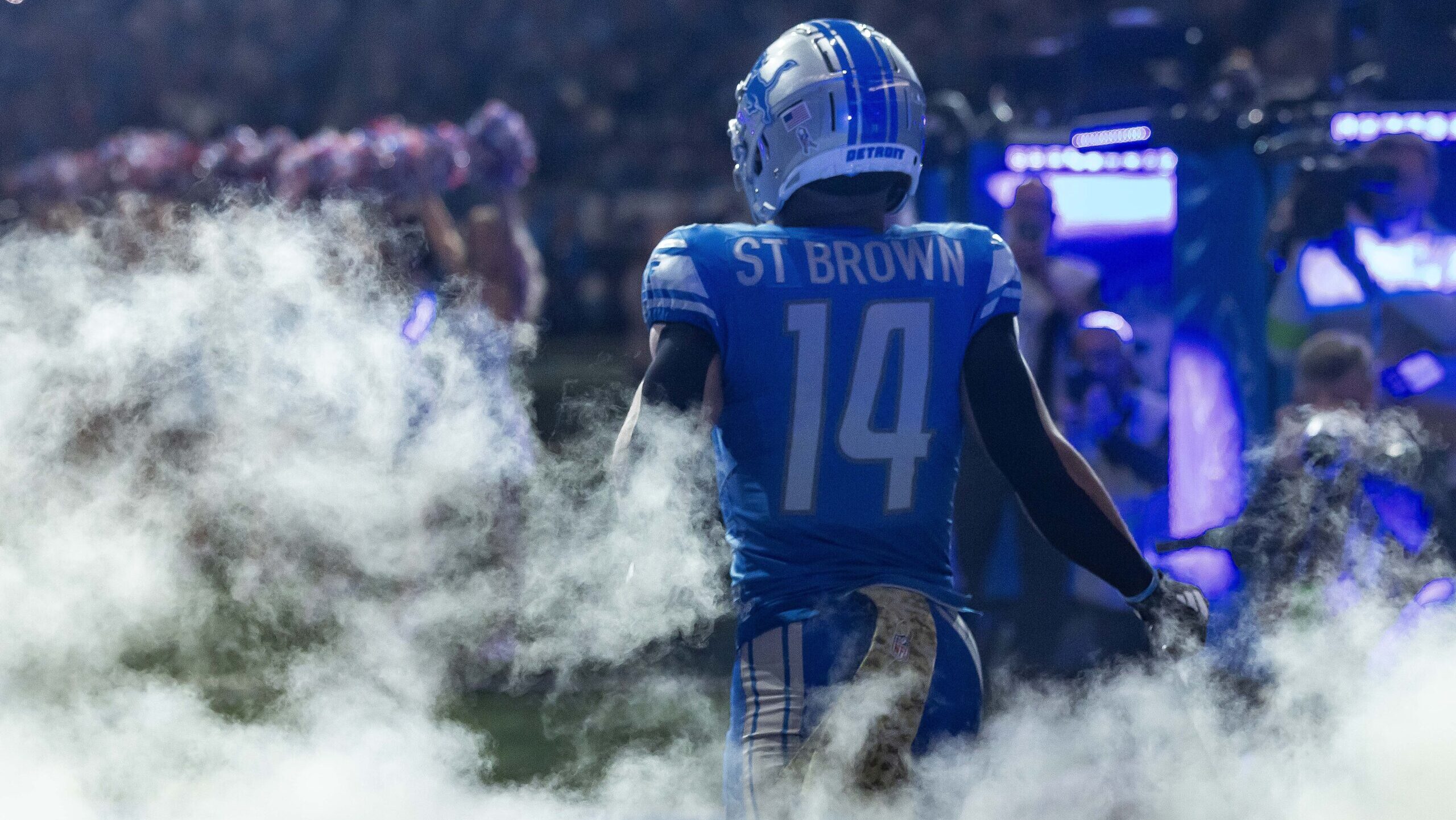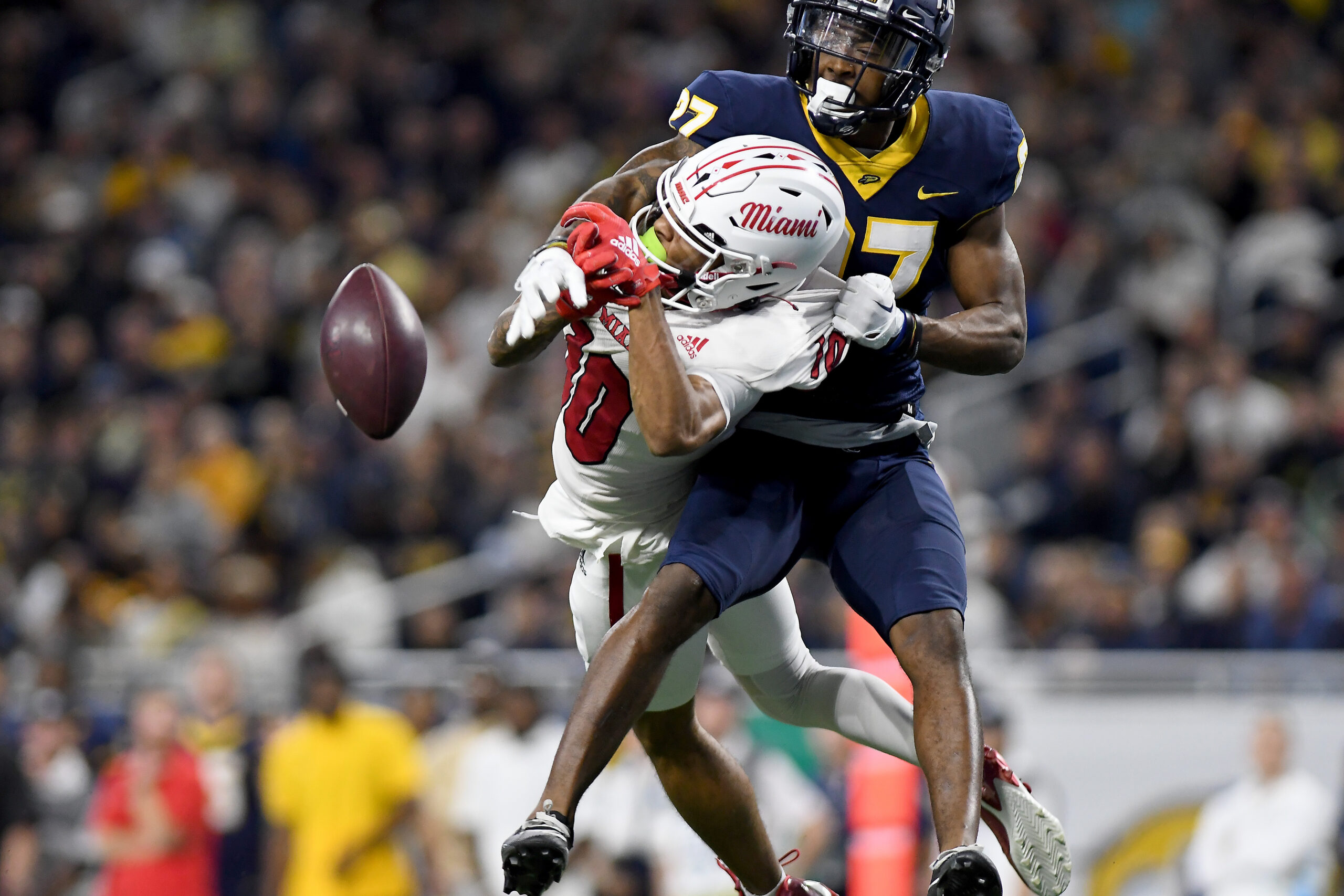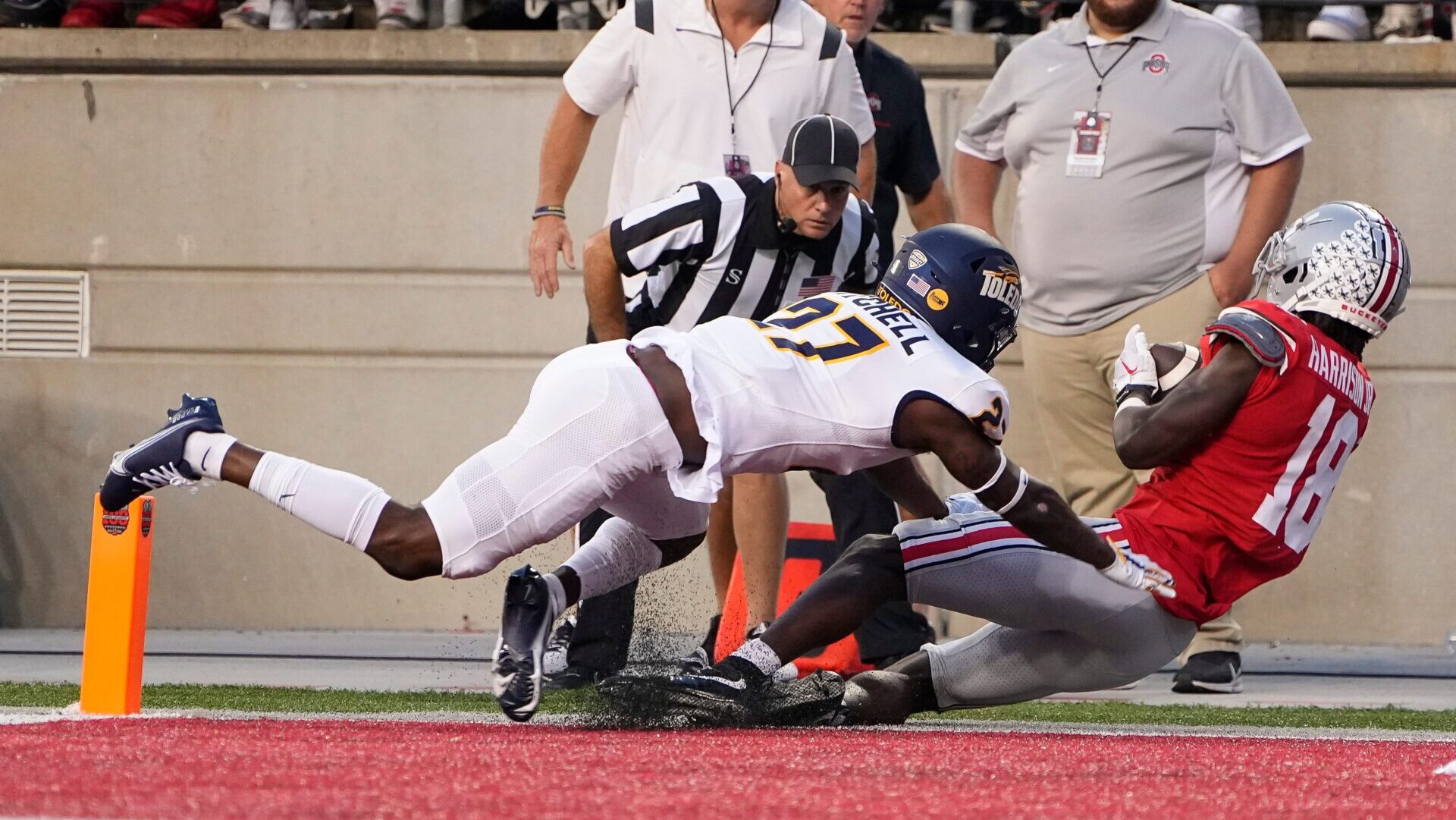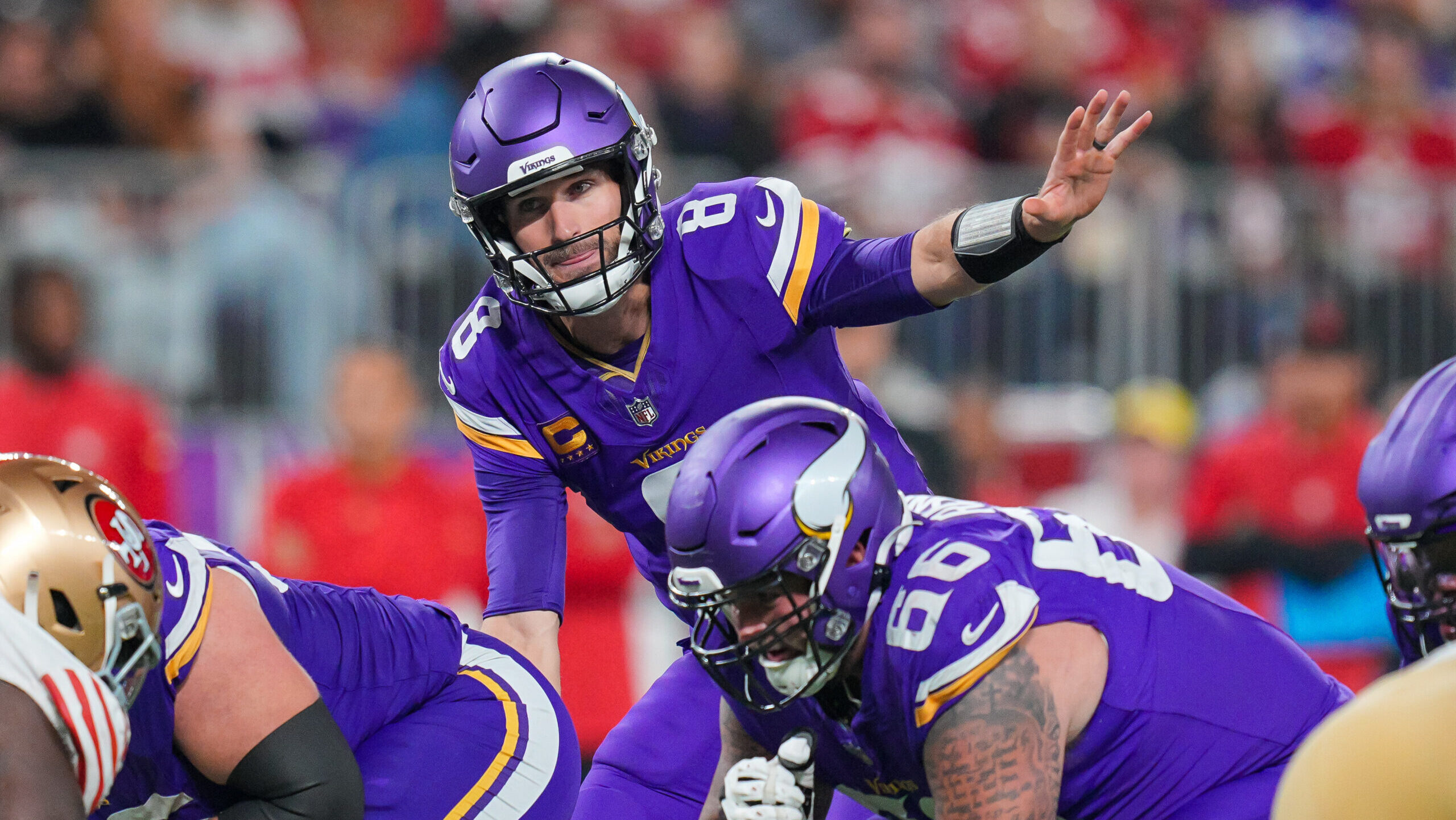Analysis
7/12/23
10 min read
Ranking NFL's 9 Best Deep Throwers Entering 2023
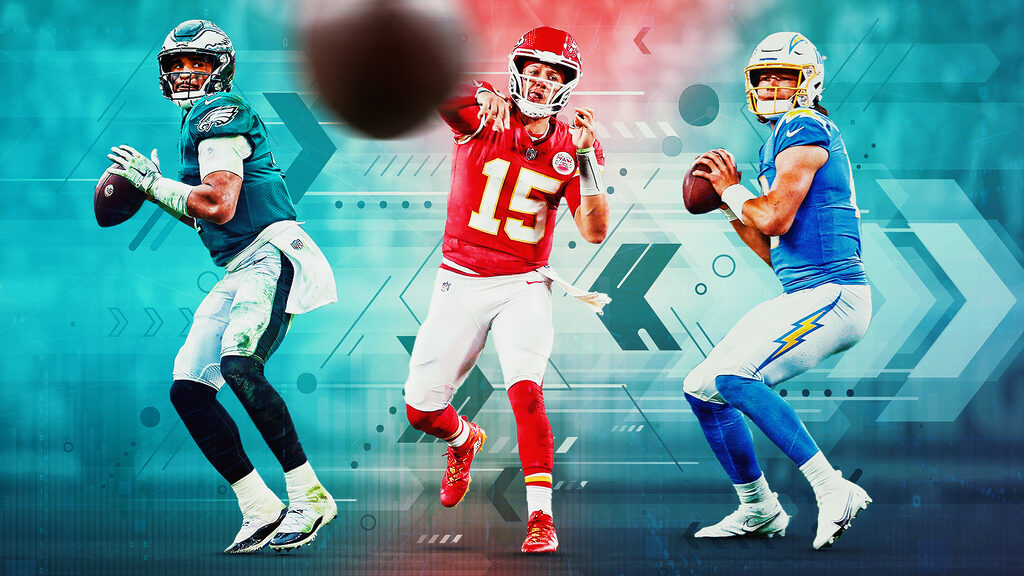
Typically, a pass is considered "deep" if it travels 20-plus yards downfield. That’s important because it means we’re not just talking about high-lofting downfield bombs. We’re also talking about balls that target deeper dig, corner and even comeback routes.
Those throws predominantly occur near or outside the numbers, making the “20-yard throw” more like 25-35 air yards. So yes, a quarterback's arm strength matters. Often, it matters a lot.
Remember: In the NFL, arm strength is not so much about how far you throw the ball but how fast. And, indirectly, how precisely, since an accurate ball travels more efficiently than an inaccurate ball.
Can you win with a quarterback who is not a premier downfield thrower? Of course. But is it easier to win with one who is? Also, of course.
NFL's 9 Best Deep-Ball Throwers
[bc_video video_id="6319178935112" account_id="6312875271001" player_id="default" embed="in-page" padding_top="56%" autoplay="" min_width="0px" playsinline="playsinline" picture_in_picture="" language_detection="" application_id="" max_width="680px" mute="muted" width="100%" height="100%" aspect_ratio="16:9" sizing="responsive" ]
 9. Geno Smith, Seahawks
9. Geno Smith, Seahawks
One could argue Deshaun Watson belongs in this spot. In Watson’s last full season (2020), he was third in passing yards on deep attempts playing in a Tim Kelly-designed Houston Texans passing attack that featured some of the best Cover 3-beating route combinations in the league.
Now, Watson is in a Kevin Stefanski offense that features a ton of three-level stretch (i.e., flood) combinations. Stefanski’s teams throw to the deepest level in that combination more than anyone. That stems from the coach’s time with Norv Turner in Minnesota. If Watson regains his old form, Cleveland’s downfield passing game will come alive.
That said, recency bias is appropriate for a list like this.
Geno Smith's last full season was this past year when he became the first quarterback since Rich Gannon to have a big-time breakout season in his 30s. Simply put, Smith was one of the league's prettiest and most consistent deep-ball passers.
We’ll learn more about him this season, as the Seahawks are poised to play more “11” personnel and presumably expand their passing game accordingly.
[bc_video video_id="6330697825112" account_id="6312875271001" player_id="default" embed="in-page" padding_top="56%" autoplay="" min_width="0px" playsinline="playsinline" picture_in_picture="" language_detection="" application_id="" max_width="680px" mute="muted" width="100%" height="100%" aspect_ratio="16:9" sizing="responsive" ]
 8. Russell Wilson, Broncos
8. Russell Wilson, Broncos
When football experts say Russell Wilson is best suited for a run-first offense, they’re not backhandedly complimenting the veteran quarterback as much as it sounds. As pure deep balls go, Wilson always has been an exceptional thrower.
An uncommonly high arc puts an almost indefensible trajectory on his ball, which is why undersized wide receivers Doug Baldwin and Tyler Lockett were such viable downfield weapons with him. Wilson can make these throws in and out of the pocket, especially on the move.
Those outside-the-pocket, on-the-move throws inherently come off slow-developing play-action. Slow-developing play-action derives from a base run game (often, wide zone run looks specifically). In Wilson’s Seattle career, he threw more 20-plus yard passes than any quarterback besides Tom Brady, and Wilson’s average yards per attempt and passer rating ranked in the top six.
Wilson is fortunate his new coach, Sean Payton, plays as wide an array of base personnel and commits to the run as much as anyone. There’s no guarantee the Payton marriage will salvage Wilson’s career in Denver.
On dropback passes, Payton wants a quarterback who plays on schedule, which has never been Wilson’s nature. But with Payton, Wilson has a defined path to success.
 7. Jalen Hurts, Eagles
7. Jalen Hurts, Eagles
There are two versions of Philadelphia’s offense, both of which you could argue are built around Jalen Hurts. The version you think of is the multidimensional read-option-based run game, which the Eagles feature in the second half as much as any team.
But that’s what the Eagles use to protect leads. They build leads with an aggressive passing game, which they rely on in the first half.
The three defining traits of that passing game, in no particular order: slant routes (which play off the RPO game), deep-intermediate in-breaking routes (digs, crossers in flood, etc.) and Go balls. Those Go balls are where Hurts took a quantum leap in 2022.
Yes, it helps Hurts has two true No. 1-caliber receivers in A.J. Brown and DeVonta Smith. But it also helps those receivers have a quarterback who is eager to turn it loose, especially when he spots 1-on-1 coverage.
 6. Matthew Stafford, Rams
6. Matthew Stafford, Rams
Time will tell if the 35-year-old Matthew Stafford’s injury woes have taken a permanent toll. If they haven’t, then we’re talking about a quarterback who led his team to a Super Bowl title in part by leading the league in passing yards on 20-plus-yard attempts two years ago.
The Rams built that 2021 offense specifically around Stafford’s downfield throwing prowess, applying many play-action route combinations into a more expansive dropback passing game.
They did that because Stafford had one of the best arms of his generation and the poise, fundamentals and courage to play from within the pocket late in the down. That gave his receivers the necessary time to make downfield throws available.
 5. Joe Burrow, Bengals
5. Joe Burrow, Bengals
Bengals coaches understand they have two wide receivers in Ja’Marr Chase and Tee Higgins, who can consistently win on 20-plus-yard throws, be it straight Go balls or one-cut deep-intermediate routes.
So the Bengals work to create these 1-on-1 matchups as much as anyone, particularly once they reach the plus side of the field. Joe Burrow has a keen understanding of all designs and aggressively attacks in these cases, especially outside, where 1-on-1 matchups are prevalent.
In the past two seasons, he has averaged 2.66 attempts per game on throws that are 20-plus yards downfield and 30-plus yards in width. Only Aaron Rodgers has thrown more (2.82 per game). And Burrow’s results on these throws – a league-high 12 touchdowns and just four interceptions – have been markedly better than Rodgers’s seven touchdowns and six interceptions.
 4. Justin Herbert, Chargers
4. Justin Herbert, Chargers
Justin Herbert has the type of arm that even the most jaded football coaches can’t help but marvel at. He does not need to get much air under his downfield throws.
He has the juice to throw dig routes nearly on a rope and post routes at trajectories similar to what most quarterbacks use on Cover 2 hole shots (which Herbert also throws as effectively as anyone). Even in two-deep coverages, a safety facing the Chargers can play his techniques perfectly and still get beat. That may not be true against any other quarterback.
While we praise Patrick Mahomes for maturing enough to develop an expansive underneath passing game, the entire football world, including the Chargers brass, wants to see Herbert develop a little less patience.
His astuteness in reading coverages and willingness to check it down accordingly is admirable and could help win him a Super Bowl. But any NFL quarterback can – theoretically – develop those abilities.
What can’t be developed are Herbert’s throwing abilities. That is why the Chargers brought in former Cowboys offensive coordinator Kellen Moore, whose system has a nice array of dagger and crosser combinations that encourage the quarterback to attack deep-intermediate windows.
[bc_video video_id="6321136672112" account_id="6312875271001" player_id="default" embed="in-page" padding_top="56%" autoplay="" min_width="0px" playsinline="" picture_in_picture="" language_detection="" application_id="" max_width="680px" mute="" width="100%" height="100%" aspect_ratio="16:9" sizing="responsive" ]
 3. Aaron Rodgers, Jets
3. Aaron Rodgers, Jets
He’s still arguably the prettiest thrower in the game. Or, at least, he is above the waist. Most coaches tell young players not to look at Rodgers’s feet, which are allowed to violate every law of throwing mechanics thanks to Rodgers’ God-given compact, quick release.
What sets Rodgers’ downfield passing apart is his precision. The timing and rhythm of throws in that 20-yard range are so crisp and on-point that Rodgers is one of the few passers who can consistently complete them, even without great timing and rhythm.
His pure vertical balls can look even better. If Green Bay’s young receiving corps had capitalized on these throws more regularly last season, the Packers likely would have made the playoffs, and who knows what that would mean for the NFL’s 2023 landscape.
Instead, it’ll be Corey Davis, Mecole Hardman and Garrett Wilson joining Rodgers’s longtime teammate Allen Lazard in making plays on some of the most beautiful downfield passes known to man.
[bc_video video_id="6318424766112" account_id="6312875271001" player_id="default" embed="in-page" padding_top="56%" autoplay="" min_width="0px" playsinline="playsinline" picture_in_picture="" language_detection="" application_id="" max_width="680px" mute="muted" width="100%" height="100%" aspect_ratio="16:9" sizing="responsive" ]
 2. Josh Allen, Bills
2. Josh Allen, Bills
You could argue the sustaining element of Buffalo’s offense is not the run game or spread passing game, but rather, Josh Allen extending plays.
Allen scrambled a league-high four times per game in 2022, and Buffalo’s success rate on these plays was a league-best 67.2 percent, nearly six percentage points higher than the scramble team runner-up New York Giants.
These scrambles work because Allen’s arm strength obligates defenses to maintain (or try to maintain) coverage integrity late into the down. Even when he’s running full speed outside the pocket, Allen can throw the ball to all of the same locations he could if he were still inside the pocket.
The entire width and length of the field remain in play. That is why, in addition to leading the league in scrambles, Allen also led the league in passing yards on throws that traveled 20-plus yards downfield (77 yards per game).
 1. Patrick Mahomes, Chiefs
1. Patrick Mahomes, Chiefs
The incredible array of different arm angles and launch points that define Mahomes’ unprecedented throwing abilities defy every type of science you can imagine. Especially when you consider Mahomes can apply those unique throwing mechanics on deep balls.
Almost equally impressive is the maturity Mahomes has developed to not rely on it. To use an excellent boxing metaphor that is a favorite of Robert Saleh’s: The Chiefs’ offense that once beat you with haymakers to Tyreek Hill now beats you with jabs to Travis Kelce.
But Mahomes’ ability to always throw those haymakers – even to wide receivers who don’t have Hill’s speed – is a big reason those jabs to Kelce are available. Mahome’s ability to work those jabs propelled him to a second Super Bowl ring in 2022.
In the last two years of the Hill Era (2020-21), the Chiefs faced two-deep coverage looks a league-high 33 times per game. During that time, Mahomes learned to work more underneath, especially in 2021, when his average target depth dropped from 9.0 to 7.7.
Now Kansas City sees two-deep looks a little closer to the league average of 28 times per game, but its underneath passing game continues to expand as things run more and more through Kelce. The point?
In the NFL, where game management is an enormous part of quarterbacking, part of being a truly great downfield passer is knowing how and when to use it. Given the temptation that comes with having the greatest throwing arm in history, no player self-regulates better than Mahomes.
Andy Benoit worked for Sean McVay and the Los Angeles Rams coaching staff from 2020 through 2022. Before that, he was a football analyst, writer and content producer for Peter King’s MMQB at Sports Illustrated, CBS Sports and The New York Times. You can follow him on Twitter @Andy_Benoit.



